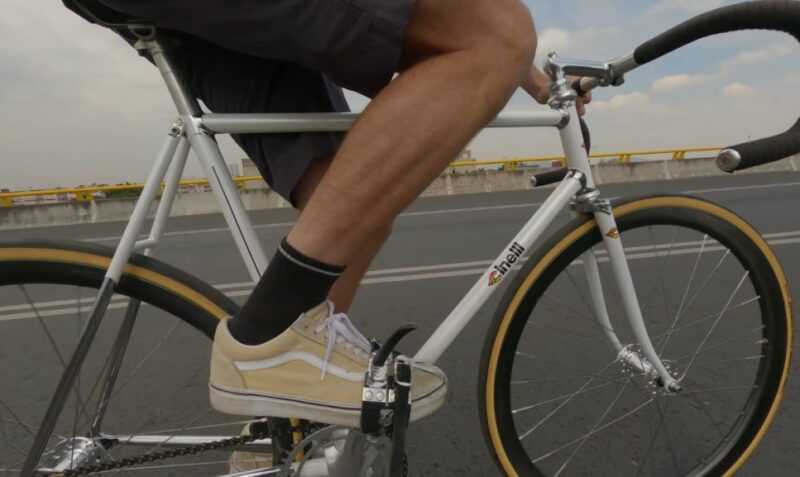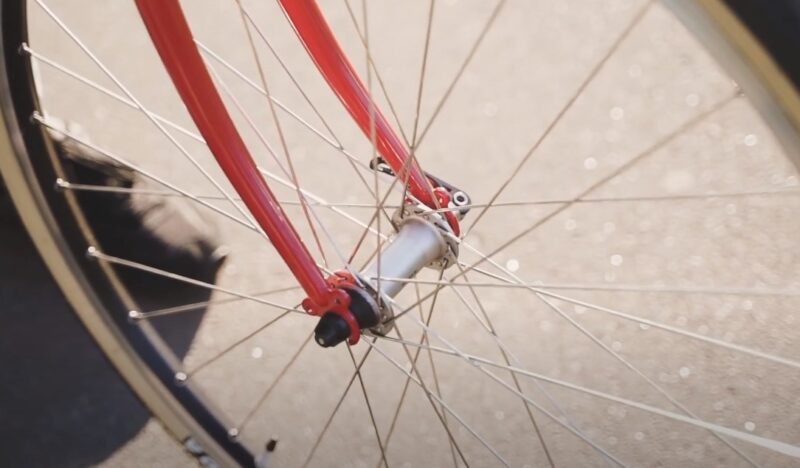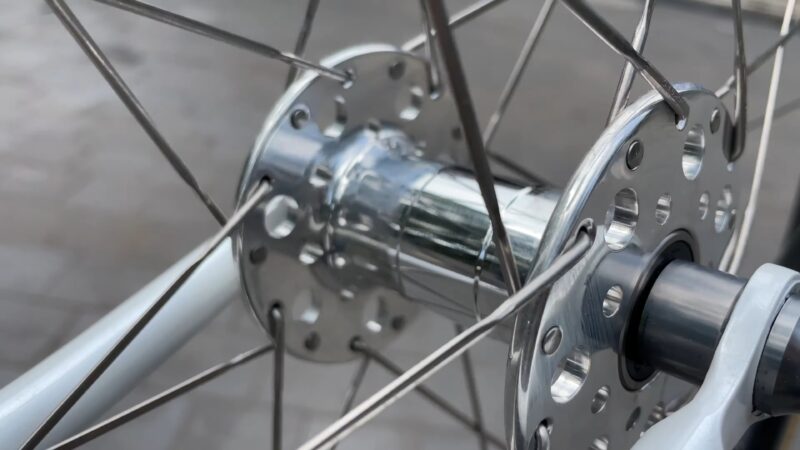So, you’re wondering what those thin, metal rods crisscrossing your bike wheels are all about?
Let’s get into the nitty-gritty of bike spokes, why they matter, and what types are out there.
Table of Contents
ToggleTypes of Spokes
1. Straight Gauge Spokes
First up, we’ve got straight gauge spokes. These bad boys are uniform in diameter from one end to the other.
They’re stiff and robust, but let’s be real, they add a bit more weight to your ride. If you’re looking for rigidity and durability, these might be your go-to.
2. Butted Spokes
Next, we have butted spokes. They vary in diameter along their length, making them lighter and more flexible than straight gauge spokes.
This flexibility can absorb more shock, which is a plus if you’re planning to hit bumpy trails.
3. Bladed Spokes

Lastly, we’ve got the high-end bladed spokes. Shaped like tiny blades, they cut through the air better, reducing drag.
These are the go-to for serious racers, but your wallet might feel lighter too since they cost more. The Sapim CX-Ray, for example, can set you back up to $3.05 per spoke.
Spoke Head Types
- J-Bend Spokes: J-Bend spokes feature a 90-degree bend at the head, making them easier to work with and replace. If you’re a DIY bike mechanic, J-Bend spokes are your best bet.
- Straight Pull Spokes: On the flip side, straight pull spokes are, well, straight. They’re often perceived to offer better power transfer, but are trickier to replace. You might want to leave these to the pros unless you’re up for a challenge.
Lacing Patterns

Radial Lacing (0-Cross)
Radial lacing means the spokes run straight from the hub to the rim without crossing each other. This pattern is lighter but not as strong, which makes it suitable for non-disc road wheels.
2-Cross and 3-Cross
2-Cross and 3-Cross patterns have the spokes crossing each other twice or thrice, respectively. These patterns provide more durability and handle greater torque, which is why they’re popular for mountain and disc brake wheels.
2:1 Lacing
2:1 lacing, where the number of drive side spokes is double that of the non-drive side, aims to balance the tension and improve wheel stability. In my opinion, this is a really elegant solution. Of course, choosing good tires is very important.
Spoke Tension

Spoke tension is crucial. Typically, wheels are built within a tension range of 120-130 kg/f. Having even tension across all spokes is essential for stability and durability.
Always use a properly calibrated tension meter for accuracy. If your wheel builder relies on “feel” alone, maybe look elsewhere.
Hole Count
The number of holes in your wheel rim, where the spokes attach, can vary. Common counts for carbon wheelsets are 24, 28, and 32.
More holes mean more spokes, which translates to increased durability and strength. If you’re on rugged trails, more spokes might save you from a wheel catastrophe.
Bicycles Through the Ages

The bicycle as we know it took shape in the 1880s, resembling today’s bikes with a metal frame, equal-sized wheels, and a chain drive. Bicycle spokes, initially made of wood, have evolved to materials like steel, aluminum, and even carbon composite or ceramics.
In 1895, a whopping 2 million bicycles were sold in the U.S., a big deal given the population back then. This explosion in popularity was thanks in part to factory production, with over 400 bicycle factories in operation by 1885.
More Than Meets the Eye
Bicycle spokes aren’t just there for show. Their design is crucial, needing to be strong yet lightweight to make your ride smoother and more efficient. Most spokes attach to the hub tangentially, meaning at an angle, which helps transmit torque and handle forces from pedaling and braking.
Radially spoked wheels, while less common and weaker, are sometimes used on the front wheel for weight saving and simplicity.
Tips & Tricks for Building Your Wheel
If you’re thinking of building your own wheels, here are a few pointers:
- Use a Properly Calibrated Tension Meter: Guesswork isn’t good enough.
- Choose the Right Spokes: Consider your riding style and needs. Butted spokes are great for general use, while bladed spokes are best for racing.
- Even Tension: Ensure tension is even across all spokes to avoid warping and increase durability.
- Match Hole Count to Use: More spokes for rougher terrain.
Building wheels isn’t rocket science, but it’s close enough. Paying attention to the details can make the difference between a smooth ride and a long walk home with a busted wheel.
Final Thoughts
Bike spokes may seem like a minor part of your ride, but they play a huge role in how well your bike performs. It doesn’t matter if you’re a casual rider or a competitive cyclist, choosing the right spokes and ensuring proper tension can enhance your biking experience.
Now you know what to look for and why it matters. So next time you’re out, take a moment to appreciate those humble spokes holding it all together.
Related Posts:
- Are Shimano Clipless Pedals Good for Gravel?…
- Everything You Should Know About Florida E-Bike Laws
- Everything You Should Know About Pennsylvania E-Bike Laws
- Cyclocross vs. Gravel Bike - 7 Key Differences You…
- Do Dirt Bike Tires Have Tubes? - What You Need to Know
- Bike Seat Cushions - Are They Any Good? Here’s What…








